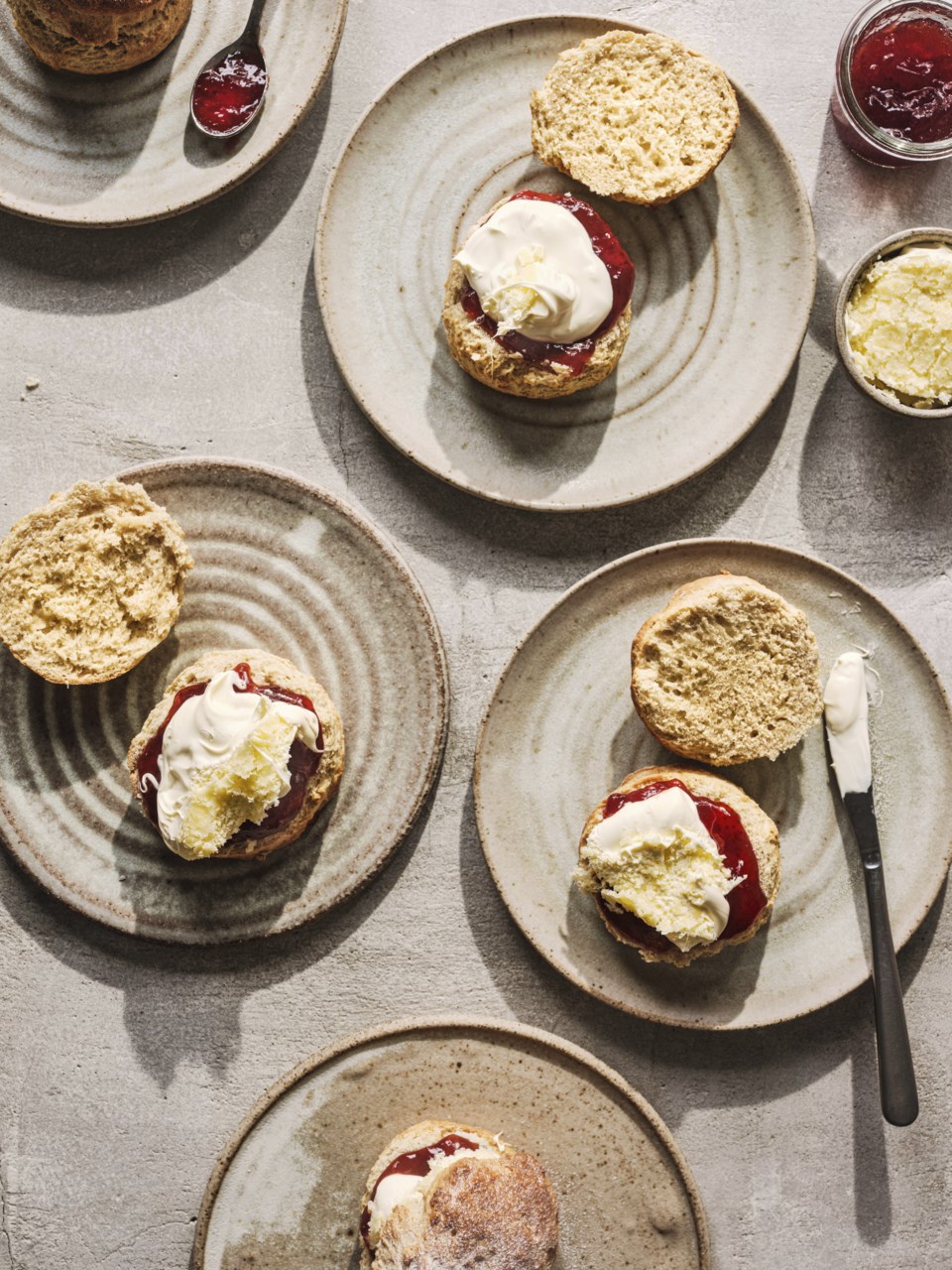Paul Hollywood uses bread flour in his scones, which might seem surprising, but it’s a popular choice in professional kitchens because the high protein content gives the scones a boost. This recipe is tried and tested over many years and he says he's never had any complaints. The Queen Mother said they were the best scones she’d ever tasted, he says. Just a couple of things to bear in mind: Don’t overwork the dough — you want it nice and light. And don’t twist the cutter when you lift it off or they won’t rise properly in the oven.
Here's the recipe from :
CLASSIC SCONES
Makes 11 scones
Ingredients:
4 cups (500g) bread flour, plus extra to dust
2 tbsp (25g) baking powder
6 tbsp (80g) unsalted butter, cut into pieces
2 large eggs
1 cup (250g) whole milk
â…“ cup (80g) superfine sugar
To glaze:
1 large egg, beaten with a pinch of salt
To serve:
Confectioners’ sugar, to dust
Preserves and Devonshire clotted cream or whipped cream
Directions:
Line two baking sheets with parchment paper.
In a large bowl, mix the flour and baking powder together. Add the butter and rub together with your fingers for a few minutes until you have a breadcrumb-like texture.
In another bowl, beat the eggs with the milk and sugar. Add to the rubbed-in mixture and stir together until the dough comes together and forms a ball.
Tip the dough onto a lightly floured surface and fold it over a few times to incorporate air, but do not knead it; you want to achieve a loose, soft dough. Using a rolling pin, gently roll out to a 1¼-inch (3cm) thickness, making sure there is plenty of flour underneath to prevent sticking.
Using a biscuit cutter, about 2 1/2 inches (6 1/2 cm) in diameter, and pressing firmly (without twisting the cutter), cut out rounds and put on the lined baking sheets, leaving space in between. Brush the tops of the scones with beaten egg then put in the fridge for 20 minutes to rest. Meanwhile, heat your oven to 425 degrees F.
Take the scones out of the fridge and brush them again with the egg glaze. Bake for 15 minutes until risen and golden brown.
Transfer the scones to a wire rack and leave to cool completely. Dust lightly with confectioners’ sugar and serve with a generous helping of preserves and Devonshire clotted cream or whipped cream.
___
Excerpted from BAKE by Paul Hollywood. Text (copyright) Paul Hollywood. Photo (copyright) Haarala Hamilton. Reprinted by permission of Bloomsbury USA.
The Associated Press




